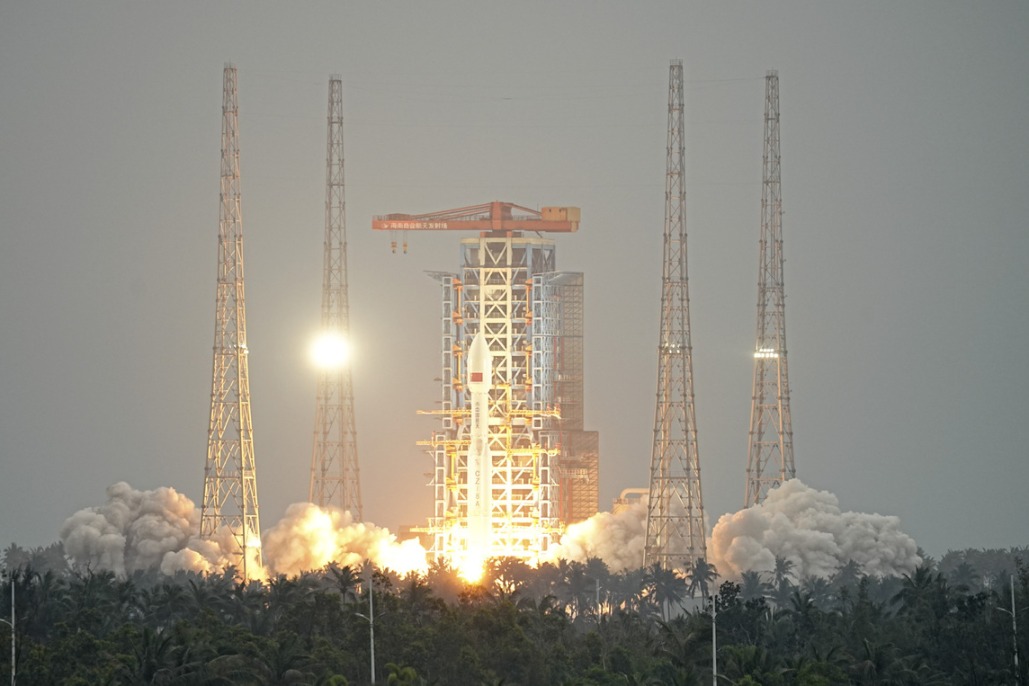Satellites launched to observe electromagnetic signals


China launched a pair of satellites on Thursday to observe electromagnetic signals emitted alongside gravitational waves that are created by violent cosmic events, such as collisions of neutron stars and black holes.
The two satellites, which compose the Gravitational Wave High-energy Electromagnetic Counterpart All-sky Monitor (GECAM) mission, was sent into orbit via a Long March 11 carrier rocket from the Xichang Satellite Launch Center in Sichuan province on Thursday morning. The project is being carried out by the Chinese Academy of Sciences.
The GECAM satellites will be used to monitor high-energy celestial phenomena such as gamma-ray bursts, which are sometimes accompanied by gravitational waves; high-energy radiation of fast radio bursts; and neutron stars, black holes and other compact objects and their collision processes.
Gravitational waves are "ripples" in space-time caused by violent and energetic events in the universe, such as colliding black holes and neutron stars-super-dense remnants of massive stars that exploded at the end of their lifetimes.
Fast radio bursts are extremely short but powerful flashes in the sky first discovered in 2007. Unlike other celestial objects that can be tracked and monitored, these bursts blink and disappear within thousandths of a second, making them very difficult to study. Some can even recur after a time, which further puzzles scientists.
Li Xinqiao, head of the GECAM payload system, said these powerful electromagnetic signals can often travel for millions of light years, but they are absorbed by the Earth's atmosphere. Therefore, scientists must launch observational satellites into space to better study these signals.
Zheng Shijie, deputy chief engineer for GECAM's scientific application system, said the two GECAM satellites rotate around the Earth in a way that can monitor these celestial phenomena at all angles at all times.
Once such signals are spotted by the new satellites, scientists can study the data recorded by them while quickly directing other types of telescopes to conduct more targeted observations, according to the CAS.
- China seeks public feedback on draft rules for anthropomorphic AI services
- China's top legislature concludes standing committee session
- China adopts revised Civil Aviation Law
- China launches satellite to aid in early extreme weather detection
- Report on mining accident that killed 6 suggests accountability for 42 individuals
- Law aimed at bolstering standard Chinese language education passed





































